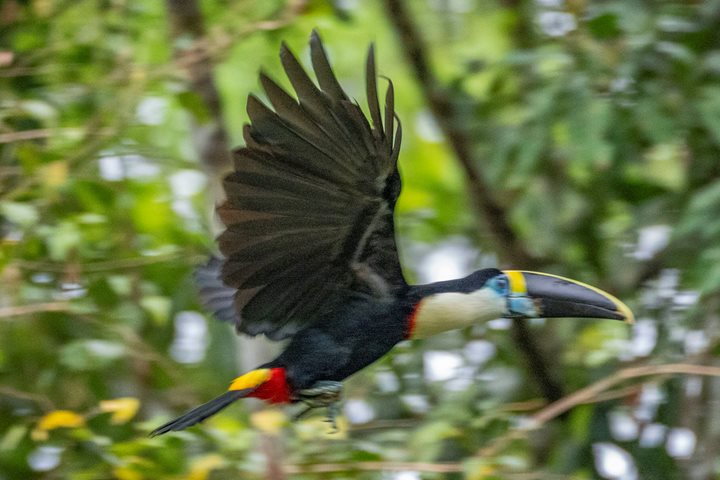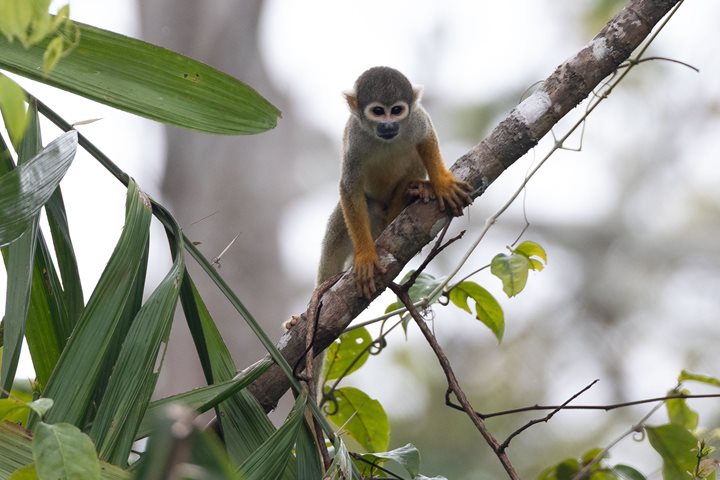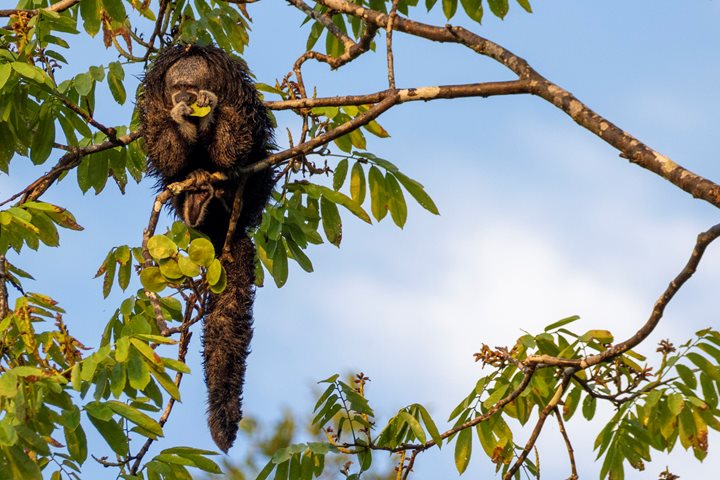Today our gorgeous home away from home, the B/F Delfin II (B/F being the initials of “river boat” in Spanish), started a new day back in the waters of the Marañón River, the other mighty river that marks the northern boundary of the Pacaya-Samiria National Reserve. Every river in the huge Amazon basin is different. Something obvious that immediately caught the attention of those early risers looking for a cup of coffee was the abundance of water lettuce drifting by on the surface. Different sediment loads, acidic or alkaline parameters, and other variables give every river a unique character that contributes to the great diversity of this marvelous basin.
After a delicious breakfast, our groups of expeditioners divided to go either hiking into the jungle at Casual Forest, or exploring Pahuachiro Creek. Casual is in a slightly elevated land that never floods during the high-water season, and as such the plant communities are different than those whose roots are underwater for four to six months of the year. Hikers learned about many of those interesting plants from our naturalists. They also spotted some animal inhabitants of the forest, including several different frog species and tarantulas, as they started to get a feel for what life is like in the hot and humid tropical rainforest. Meanwhile, those who explored the creek known as Pahuachiro observed a great variety of wild creatures. Besides the ubiquitous black-collared hawks and yellow-headed caracaras, they got the chance to watch a large troop of saddle-backed tamarin monkeys feeding on small fruits hanging over the water. Some individuals were just a few feet from the skiff. Squirrel monkeys, horned screamers, laughing falcons, and snail kites were just some of the many species seen there this morning.
Back on board, our bartender taught us how to prepare Peru’s national drink, the pisco sour, and this lesson set the mood for the rest of the day. Later, we boarded our skiffs again and explored another of the many smaller tributaries flowing into the Marañón River, known as Nauta Creek. There we observed great numbers of saddle-back tamarins and squirrel monkeys, including some females carrying their very young babies. We also had a unique opportunity to spot the last monkey species that we were missing, the night or owl monkey! And just at the end, when all skiffs were heading back, we got a very special gift: a sighting of a plum-throated cotinga. Its magnificent bright blue color was shining with the sunlight! What a great way to end another wonderful day exploring Amazonia!







